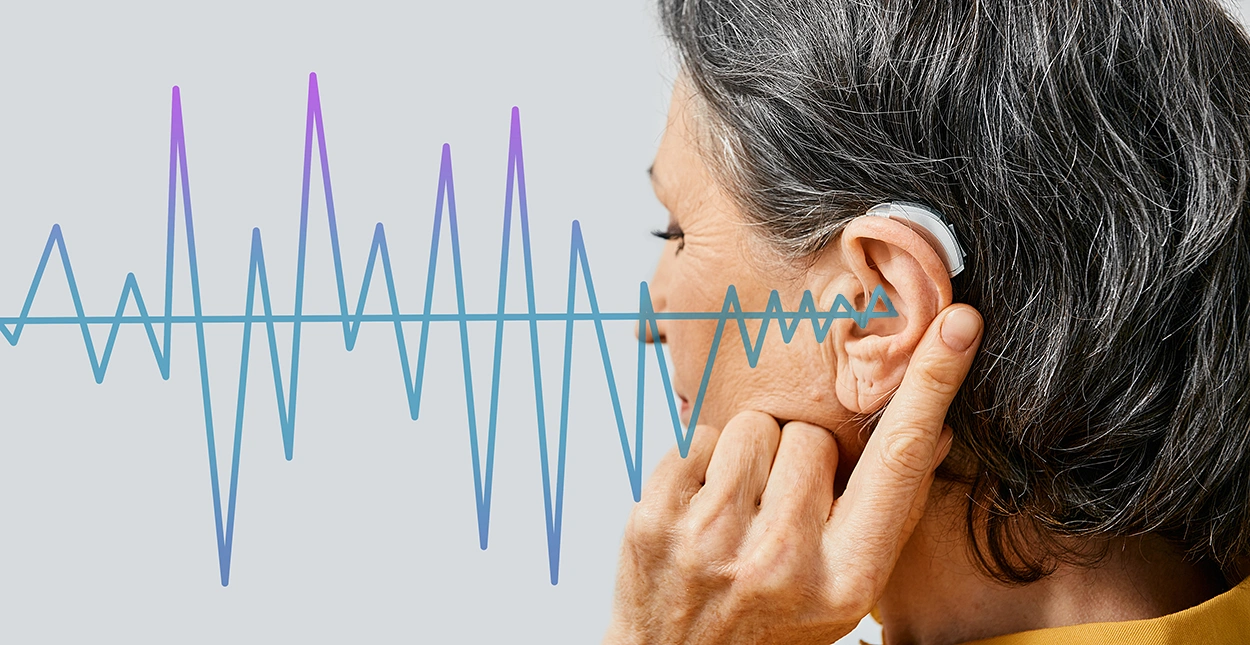
When you wear hearing aids for the first time, your brain has to relearn how to interpret all the new noises you couldn’t hear before. This process is called hearing acclimatization, and it’s an important part of your journey toward better hearing.
In this guide, we explain everything you need to know about hearing aid acclimatization and share tips for making the transition as smooth as possible.
Hearing Aid Acclimatization Explained
The first time you wear hearing aids, you might notice that things sound a little different. Every day noises may seem unusually loud, background sounds might be overwhelming, or your own voice could even sound unfamiliar. Don’t worry! This is all completely normal.
What you’re experiencing is known as hearing aid acclimatization. This is the adjustment period your brain goes through as it relearns how to process sounds. Just like your eyes need time adjusting to new glasses, your brain needs time to adapt to hearing aids.
How Your Brain Adapts to Hearing Aids
When you live with hearing loss, your brain has to work harder to fill in auditory gaps, relying on context clues and guesswork to help you piece everything together. Once hearing aids begin restoring those missing signals, your brain has to shift gears.
Instead of working overtime to make sense of what you’re hearing, your brain is now relearning how to process all this restored auditory stimulation. So, as it recalibrates, sounds might sound different and feel louder or a bit overwhelming.
How Long Does It Take to Adjust to New Hearing Aids?
When it comes to hearing aid acclimatization, there is no one-size-fits-all timeframe. Everyone’s hearing is different, so the adjustment process will look different from person to person.
Many people start to adjust within the first few days or weeks, while others can take up to a month to fully acclimate.
Factors that can influence how long it takes to adjust to new hearing aids include:
- Your degree of hearing loss
- How often you wear your hearing aids
- How long your hearing loss went untreated
Working closely with your hearing care specialist can help with managing any discomfort, troubleshooting issues, and even shortening the adjustment period.
The Stages of Hearing Aid Acclimatization
Adjusting to hearing aids is a gradual process that varies from person to person. As your brain gets comfortable with your new way of hearing, you’ll likely notice changes in how things sound.
To help you better understand what to expect, we have broken down the typical hearing aid acclimatization process into three key stages:
The First Few Days: Getting Used to Amplified Sound
During the first few days of acclimatization, some things may seem extra loud or overstimulating. Every day sounds like footsteps, rustling paper, running water, or even your own voice may be a little startling at first. This is all normal.
The First Few Weeks: Relearning Sound Processing
After a few weeks of wearing your hearing aids every day, your speech clarity should greatly improve as your brain relearns how to process these auditory signals. Within this period of time, you will likely visit your hearing care specialist so they can fine-tune the comfort and performance of your devices.
During these visits, they may also turn up the amplification settings to help you adjust to your full prescription.
The First Month: A Natural Hearing Experience
After a month of wearing hearing aids regularly, sounds should start to feel more balanced and natural. Your brain will become more efficient at filtering background noise and focusing on meaningful sounds like speech.
Then one day, you will find that you no longer think about your hearing aids at all because they are now a regular part of your routine.
Tips for Getting Used to Wearing Hearing Aids for the First Time
Wearing hearing aids for the first time is exciting. But just like any new routine, it may take some getting used to. Thankfully, there are plenty of simple ways to ease the transition and make the experience more comfortable.
Below are some helpful tips to support you as you adjust to wearing hearing aids for the first time:
Practice Actively Listening to Different Sounds
To help your brain relearn how to interpret sounds, try practicing actively listening to different sounds in a variety of environments. Think of it like reintroducing your ears and brain to sounds they haven’t heard clearly in a while. Focus on identifying the source of each sound and distinguishing between background noise and speech.
Another tip is to have someone say a sequence of numbers or words and repeat them back. This is a great exercise for strengthening speech comprehension as you get used to wearing hearing aids every day.
These kinds of listening exercises help retrain your brain and can speed up the acclimatization process.
Read Aloud or Watch TV with Captions
Another great way to strengthen the connection between what you hear and what you understand is by pairing sound with visual cues. Reading aloud can help you get used to hearing your own voice again while also helping with speech recognition and clarity. Watching TV with captions offers a similar benefit, allowing you to match spoken words with written text, reinforcing speech comprehension.
Over time, these practices can improve your ability to follow conversations and process speech more naturally.
Clean and Care for Your Hearing Aids
Getting used to wearing hearing aids is all about making them a part of your daily routine. Creating a daily cleaning routine will not only help keep your devices working properly but also ensure they continue to fit correctly and comfortably in your ears.
This is important no matter how long you’ve been wearing hearing aids, but especially as you’re getting used to them. Plus, the cleaner your hearing aids, the clearer and more reliable they’ll sound, making it easier for your brain to adjust.
Be Patient and Vigilant
Adjusting to new hearing aids takes time. The key is to stay patient and give your brain time to adapt and relearn how to process sounds. It’s important to pay attention to how different environments affect your hearing and make note of anything that feels uncomfortable or unclear. Keeping a journal or log of these experiences can help your hearing care specialist fine-tune your settings during follow-up visits.
With consistent use, awareness, and support, you’ll gradually become more confident and comfortable in your new and improved way of hearing.
Attend Your Follow-Up Appointments
Follow-up appointments are a crucial part of your hearing aid acclimatization process. These check-ins give your hearing care provider a chance to fine-tune your devices based on your real-world experiences.
It’s also a great opportunity to ask questions, share any challenges or concerns, and get professional advice on maximizing comfort and hearing performance. Skipping these appointments can slow your progress, so be sure to attend each one and come prepared with notes or concerns to make the most of your visit.
Audibel Hearing Clinics Proudly Service All Hearing Aid Brands
If you’re having trouble adjusting to your new hearing aids, our specialists are here to help. All Audibel clinics offer new hearing aid wearer assistance on all hearing aid brands, no matter where you bought them.
Find an Audibel hearing clinic near you today and take the first step towards getting the personalized care you deserve.







Have a question or Comment?